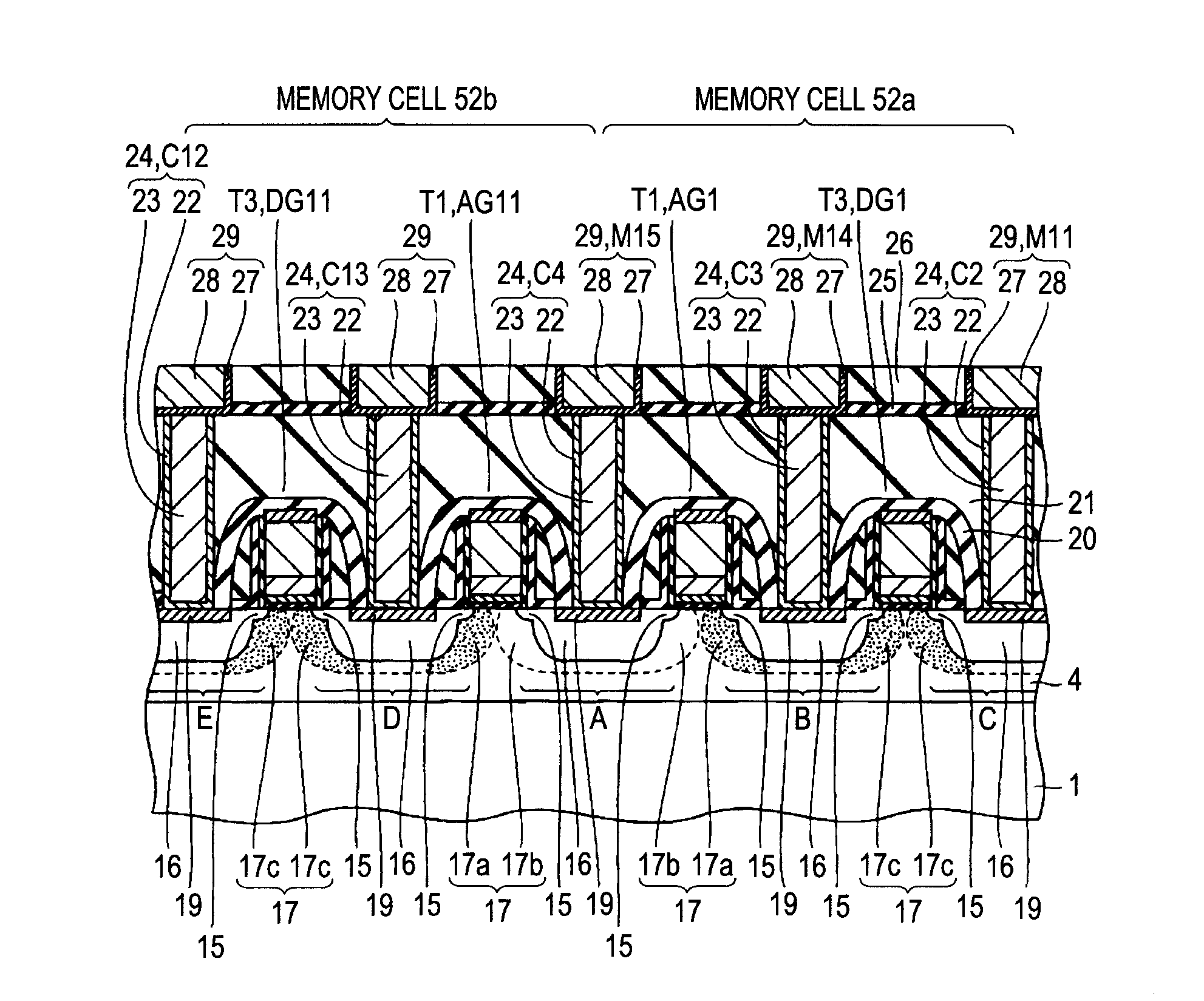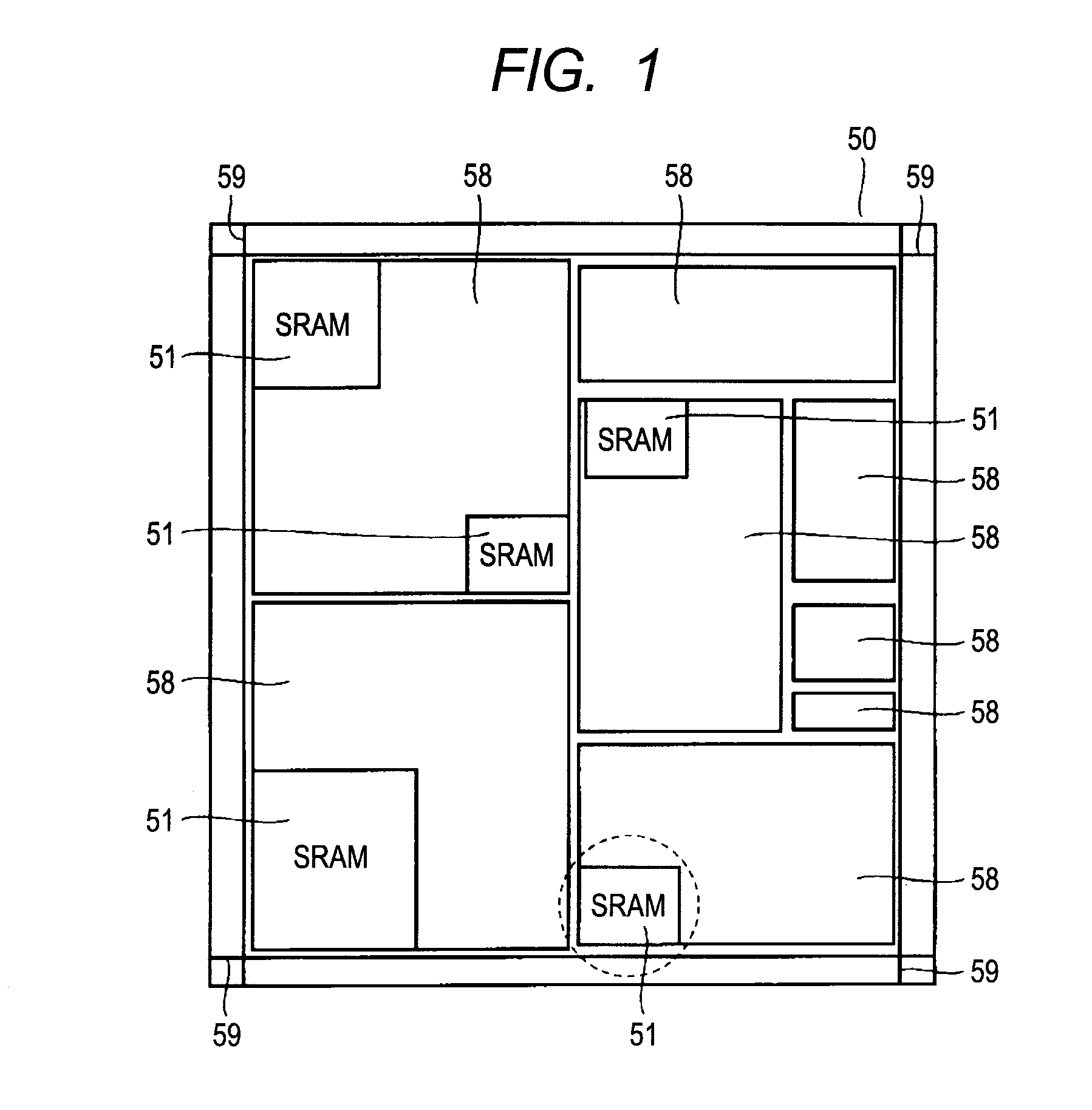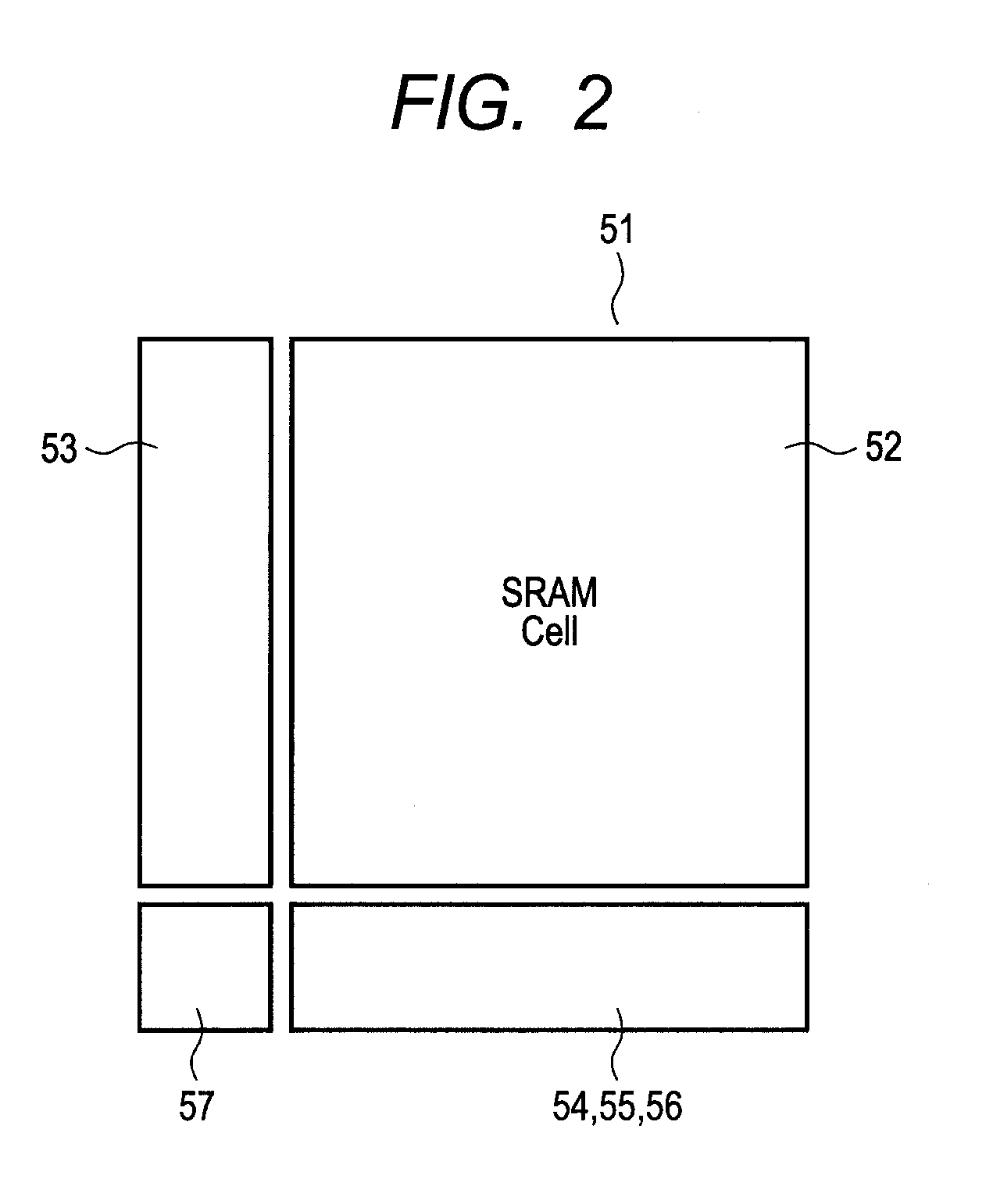Method of manufacturing semiconductor device, and semiconductor device
a manufacturing method and technology of semiconductor devices, applied in the direction of semiconductor devices, electrical appliances, transistors, etc., to achieve the effect of reducing the implantation mask
- Summary
- Abstract
- Description
- Claims
- Application Information
AI Technical Summary
Benefits of technology
Problems solved by technology
Method used
Image
Examples
embodiment 1
[0133]First, a description will be given of an example of a semiconductor device referred to as a SOC in which a SRAM is applied to a memory cell. As shown in FIG. 1, in a semiconductor device 50, a plurality of logic circuits 58 which implement the respective specific functions of a micro-control unit, an analog-digital converter, a digital-analog converter, a bus controller, and the like, SRAMs 51 coupled to some of the logic circuits to temporarily store data therein, and the like are mounted on one chip. IO regions 59 are formed so as to surround the logic circuits 58 and the SRAMs 51. As shown in FIG. 2, each of the SRAMs 51 includes a SRAM memory cell array 52 having a plurality of memory cells arranged in a matrix, an X-decoder 53, a Y-decoder 54, a sense amplifier 55, a line driver 56, and a main control circuit 57.
[0134]Next, a description will be given of an equivalent circuit of the SRAM memory cell. As shown in FIG. 3, the SRAM memory cell includes a flip-flop in which t...
embodiment 2
[0201]In the embodiment described above, the exemplary case has been described in which the impurities of the pair of halo regions of each of the drive transistors are the same. Here, a description will be given of a semiconductor device in which the impurity concentrations of the pair of halo regions of each of the access transistors are set asymmetrically, and the impurity concentrations of the pair of halo regions of each of the drive transistors are also set asymmetrically.
[0202]First, a description will be given of an equivalent circuit of a SRAM memory cell. As shown in FIG. 41, in the access transistors T1 and T2 of each of the memory cells in the semiconductor device according to Embodiment 2, the respective pairs of halo regions 17 formed therein include the halo regions 17a coupled to the storage nodes SN1 and SN2 and the halo regions 17b coupled to the bit lines BL and / BL, and the impurity concentrations of the halo regions 17a are set higher than the impurity concentrat...
embodiment 3
[0229]Here, a description will be given of the case where, as an impurity implanted to form the halo regions of the nMIS transistors, carbon (C) is implanted in addition to the p-type impurity.
PUM
 Login to View More
Login to View More Abstract
Description
Claims
Application Information
 Login to View More
Login to View More - R&D
- Intellectual Property
- Life Sciences
- Materials
- Tech Scout
- Unparalleled Data Quality
- Higher Quality Content
- 60% Fewer Hallucinations
Browse by: Latest US Patents, China's latest patents, Technical Efficacy Thesaurus, Application Domain, Technology Topic, Popular Technical Reports.
© 2025 PatSnap. All rights reserved.Legal|Privacy policy|Modern Slavery Act Transparency Statement|Sitemap|About US| Contact US: help@patsnap.com



